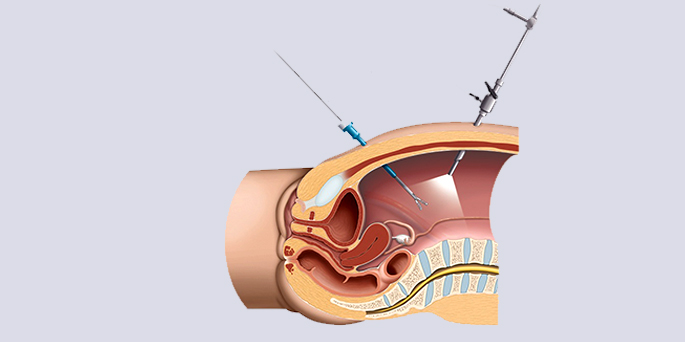
Laparoscopic Surgery (Closed Surgery)
Laparoscopic surgery is usually known as closed surgery. In laparoscopic surgery, the video camera and the special instruments are used. First, the abdominal cavity is inflated with carbon dioxide gas. Then, approximately 1 cm of incisions is made within abdomen and thin tubes are inserted into abdomen from these incisions. The ports allow the entry of instruments used in the operation, but prevent the discharge of carbon dioxide gas. In laparoscopic surgery, there are long thin instruments with different ends designed for the operation to be performed.
What are the advantages of laparoscopic surgery?
The abdominal wall is not opened during laparoscopic surgery. Therefore, there is less pain in the postoperative period and fewer surgical scars are seen. Thanks to the lack of surgery incision, less tissue damage and less pain, the patient quickly stands up and returns to his daily life. As the patient recovers more quickly, the intestinal movements start too early and the patient starts to eat in a shorter time. The recovery time of the patients shortens, duration of hospitalization reduces and the period to return to daily life becomes faster.
Main Advantages of Laparoscopic Surgery;
- Less pain after surgery
- Faster recovery
- Less hospitalization
- Quicker return to normal life
- Minimum surgery scar
- Less intraabdominal adhesion
- Less visible surgery scar (better cosmetic appearance)
What are The Areas That Laparoscopic Surgery is Used in Pediatric Urology?
- Undescended testicles (Descend of the testicles that remain in the abdomen)
- Removal of kidney (Nephrectomy)
- Ureter pelvic junction obstruction (UPJ stenosis)
- Vesicoureteral reflux surgery
- Double kidney anomalies (Duplicated system)
- Adrenal gland surgery
- Appendectomy

